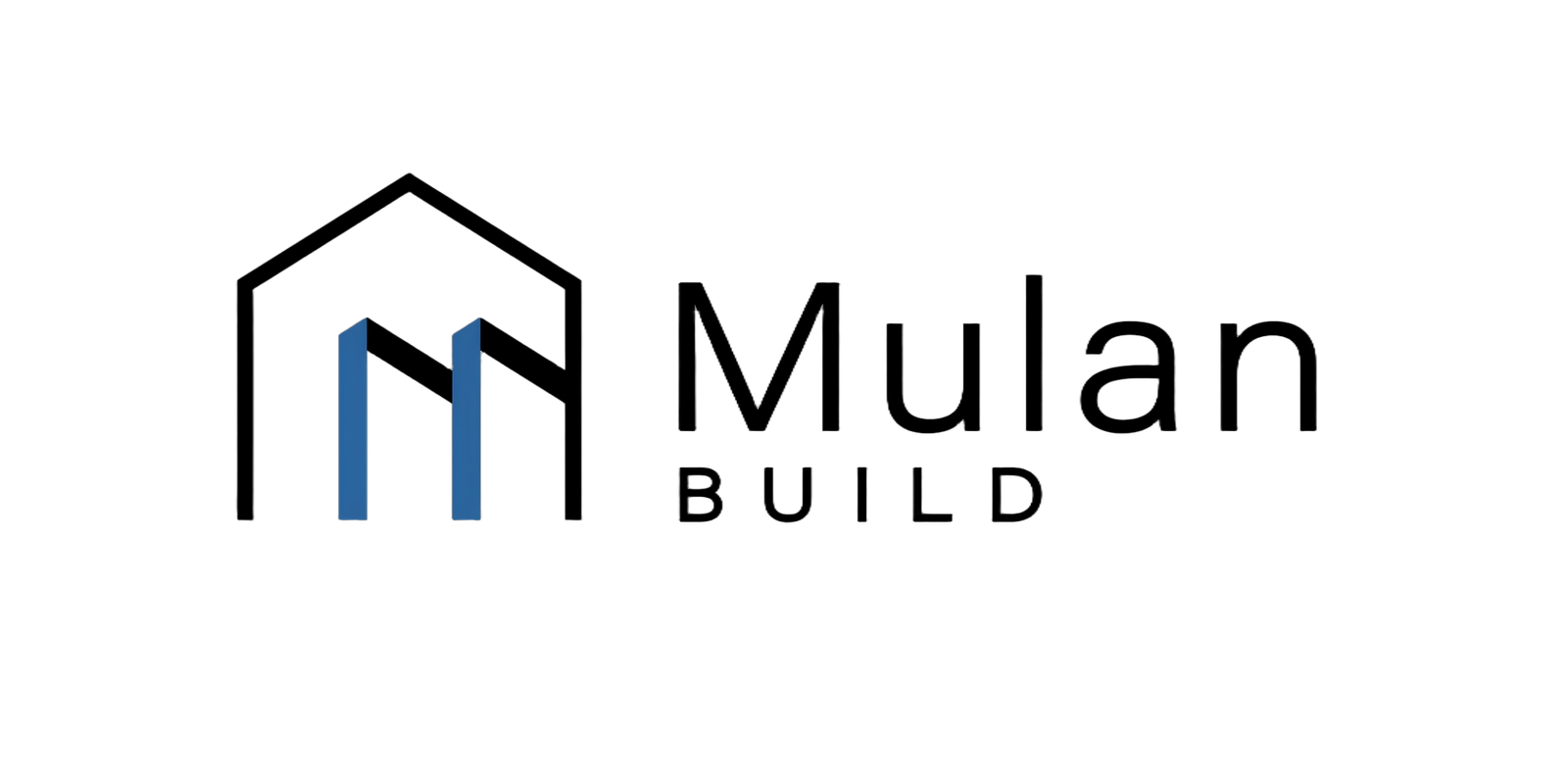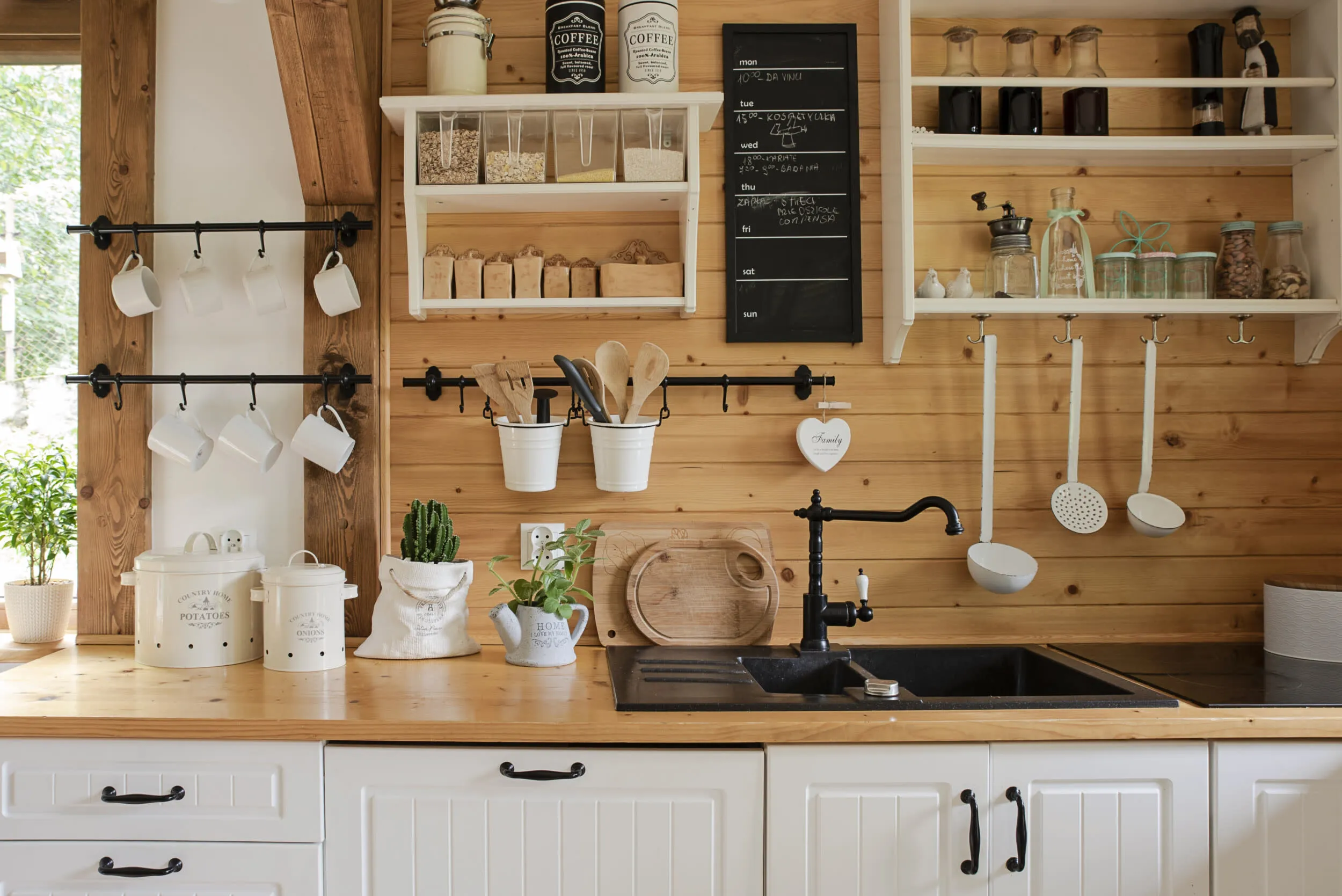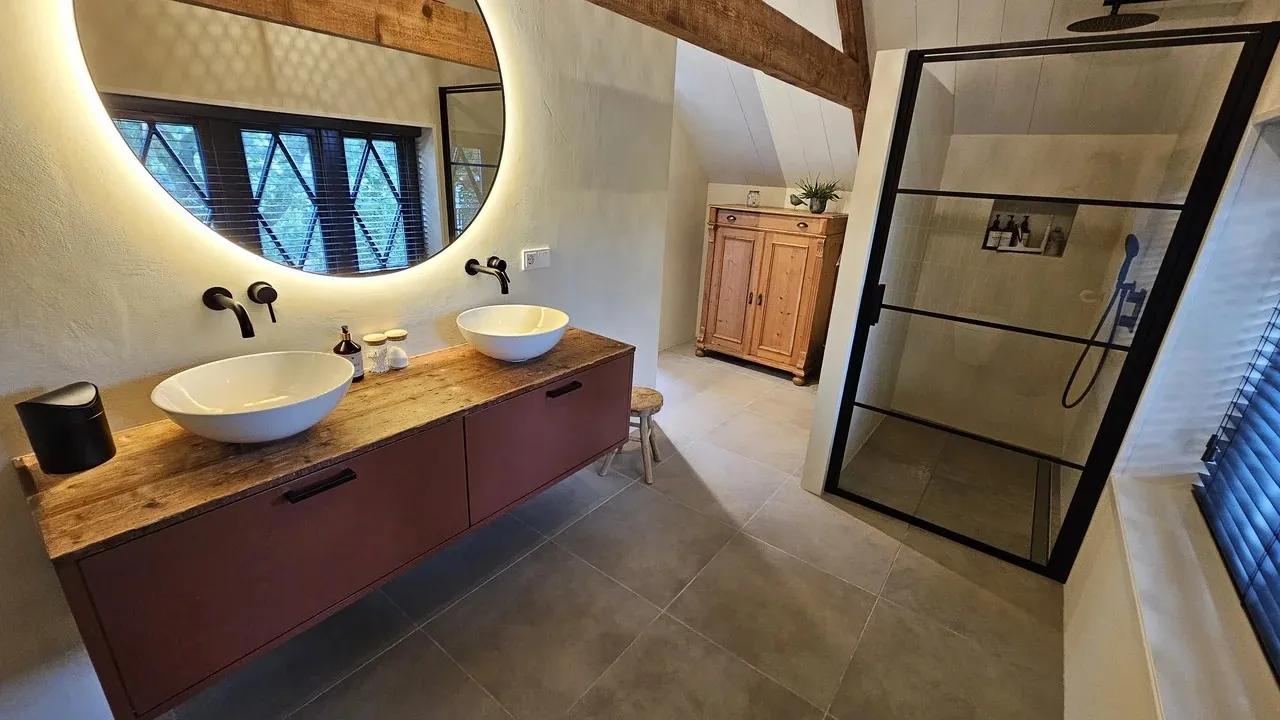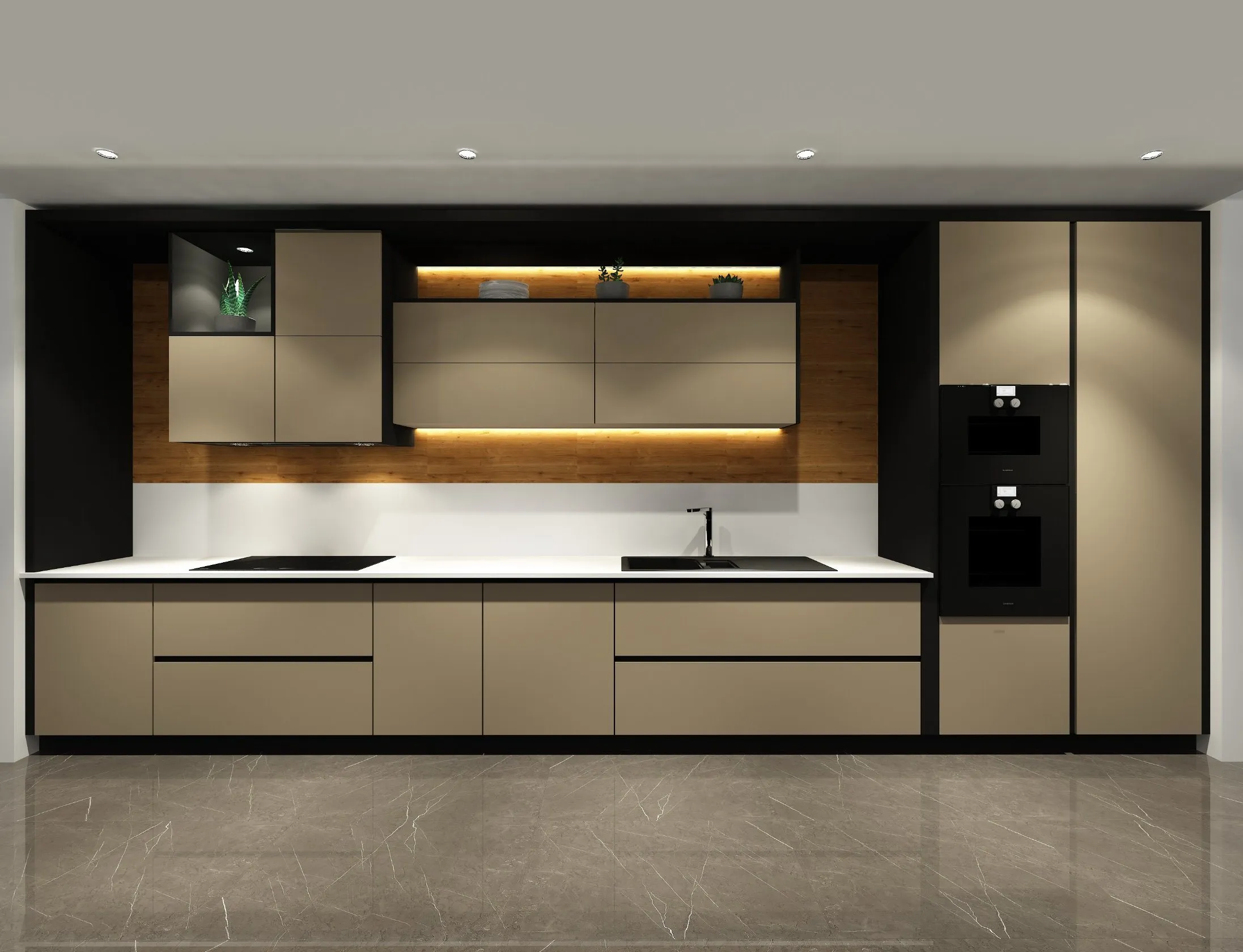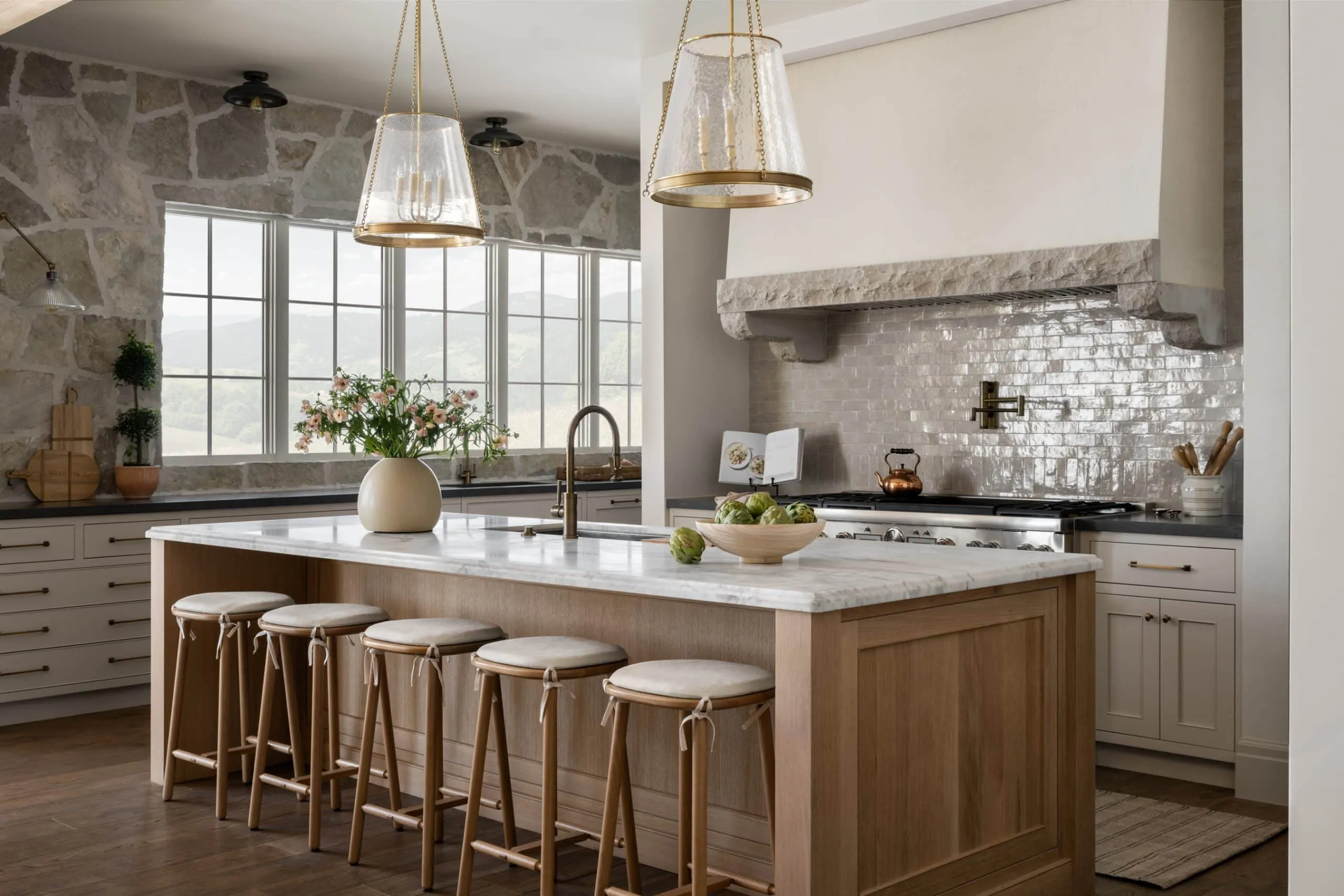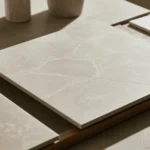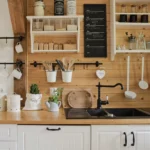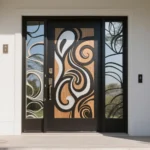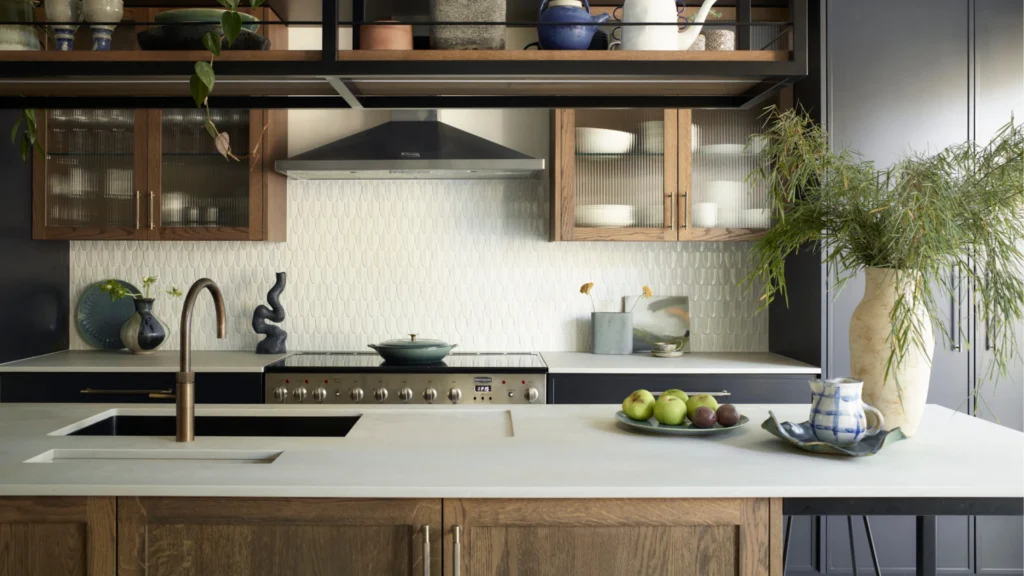
Your kitchen should fit how you cook and live. Not a passing trend. This playbook shows what to skip now and what to choose instead—clear, practical, and timeless.
We work as a one-stop building-materials partner from Foshan, serving overseas projects end-to-end. We cover kitchens, wardrobes, bathrooms, doors, windows, tiles, lights, flooring, and wall panels, and wall panels. We support homeowners, remodelers, designers, developers, and contractors. We coordinate whole-home style matching, interior and façade 3D design, export logistics, and after-sales support—kept simple and consistent.
Most 2025 “don’ts” fall into two buckets: looks that date fast, and features that fight daily use. Replace them with warmer palettes, smarter storage, and better lighting. You get a kitchen that works now and still looks right years later.
Here is how to make the shift with confidence.
Which kitchen trends are going out of style in 2025?
The trends fading fastest: heavy gloss, cold gray, busy mosaics, and high-maintenance open shelving everywhere. The direction now is warm wood tones, cleaner lines, and fewer visual breaks. Function leads, style supports. The goal is calm, not plain.
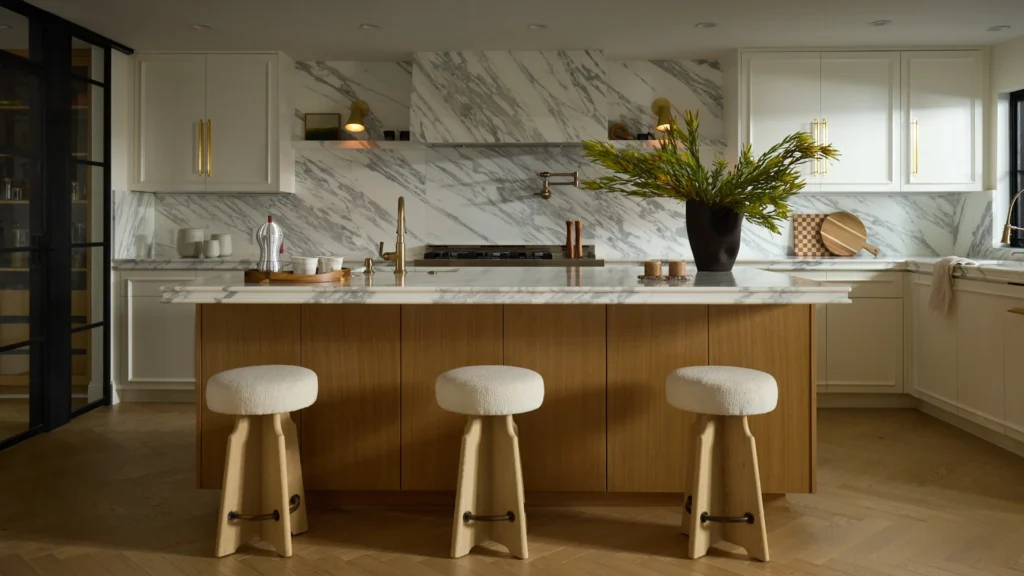
What to drop vs. what to do
Drop: wall-to-wall gloss, “millennial gray,” fussy hardware, and full walls of open shelves.
Do: matte or satin finishes, warmer woods, mixed metals in small doses, enclosed storage with a few curated displays.
Quick guide
| Looks to Ditch | Why It Dates | Do Instead | Why It Lasts |
| All-gloss cabinetry | Shows prints; harsh glare | Matte/satin fronts | Softer light; hides wear |
| Cold gray everywhere | Flat, overused | Warm wood + color | Adds depth and warmth |
| Busy mosaics | Visual noise | Slab or large-format tile | Calm lines; easy clean |
| Full open shelving | Dust, clutter | 1–2 display shelves + uppers | Balance form and function |
Use trends as accents. Keep big surfaces restrained so you can update with paint, lighting, and stools later.
What should I do instead of all-white kitchens?
All-white can look flat. Keep white if you love it, but warm it up. Add natural wood, stone with movement, and softer metals. Use contrast so edges read clean. White stays, but it no longer stands alone.
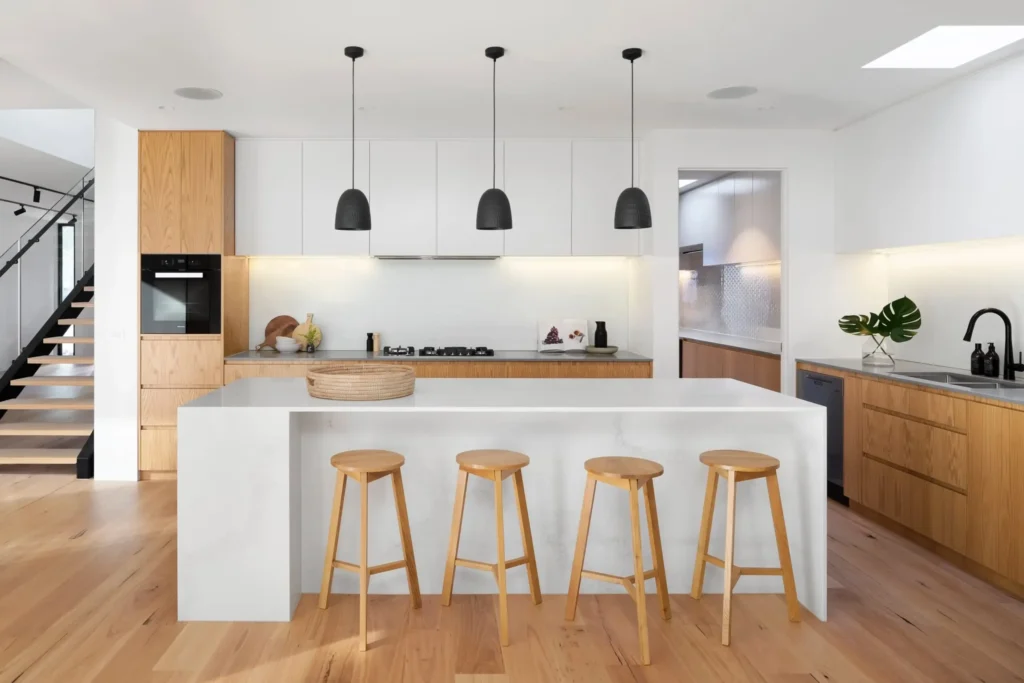
Choose a warm base white, then layer texture and tone. Add wood on the island or shelves. Choose a stone with gentle veining. Bring in brass or nickel to soften the look. Keep lines simple so the room reads calm, not sterile.
Ways to evolve white
Color pairing
- Warm whites + mid-tone wood = calm contrast.
- Add one saturated element: island, range hood, or pantry door.
Material pairing
- Soft-vein stone for backsplashes.
- Hand-formed tile for subtle texture.
Lighting pairing
- Side sconces to cut shadows.
- Dimmable pendants to tune mood and task.
A white base still wins for resale and light, but warmth, texture, and contrast make it feel designed, not default.
Are open shelves outdated now?
Open shelves are not “wrong.” They are just high-maintenance when used wall-to-wall. Keep one or two short runs for display. Use enclosed uppers for daily items. Your kitchen will look cleaner and take less time to reset.
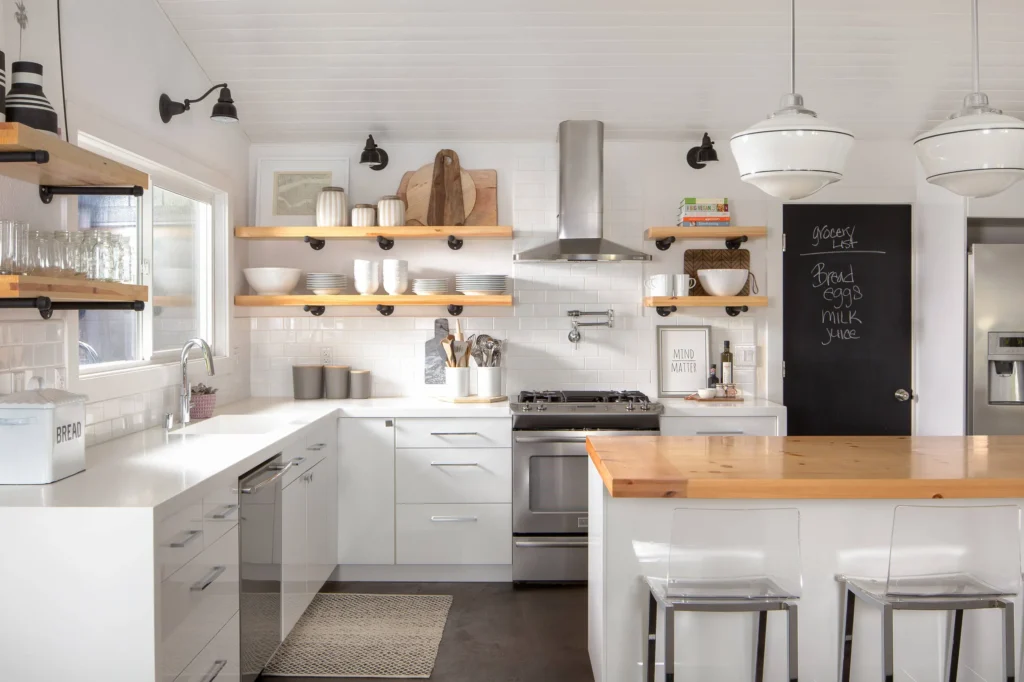
A balanced plan that works
Where open shelves shine
- Coffee corner, bar, or a short wall.
- Display ceramics, cookbooks, plants. Keep counts low.
Where they struggle
- Over cooktops or high-grease zones.
- When used for every bowl and cup.
How to keep them tidy
- Limit depth to ~8–10 in so items sit neat.
- Color-group items; use pairs and stacks.
Better daily storage
- Put dishes in deep drawers near the dishwasher.
- Use adjustable uppers with a mix of doors and reeded glass.
One strong shelf can add personality. Many shelves can add chores. Pick your battles.
Are Shaker cabinets still in style?
Shaker is still common and can be timeless. It also reads “generic” when copied without thought. Keep the spirit—clean rails and stiles—but tune thickness, edge detail, color, and hardware. Or switch to slim-rail or slab for a calmer read.
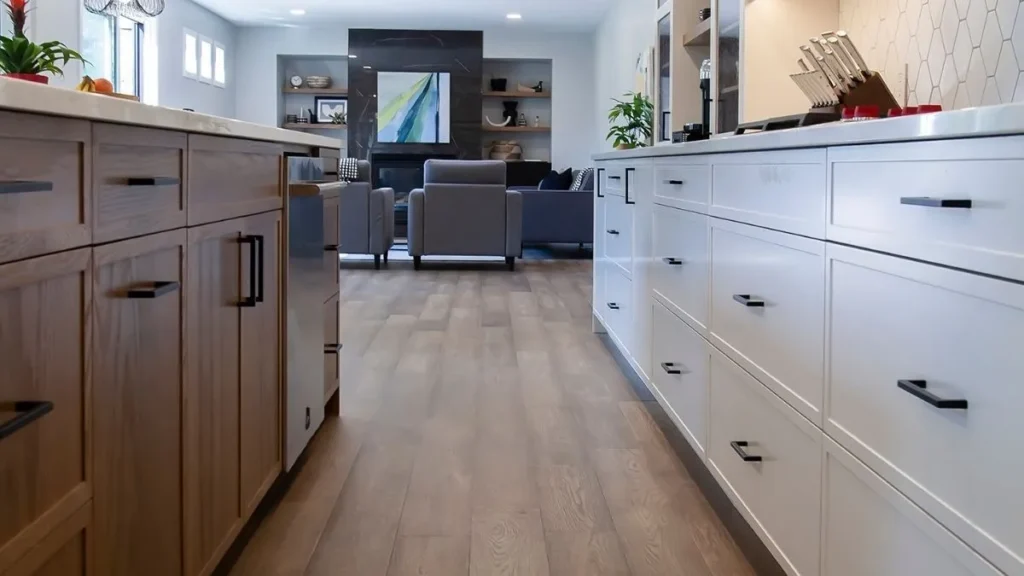
How to modernize (or move on)
Update the profile
- Slim the rails; consider bevel-free edges.
- Use inset or full-overlay for cleaner shadows.
Shift the finish
- Mid/dark wood adds warmth and contrast.
- Painted doors in earthy tones feel current.
Tune the hardware
- Softer metals (brushed nickel, antique brass).
- Fewer knobs; more integrated pulls where practical.
When to go slab
- Small kitchens with many doors benefit from slab.
- Pair slab lowers with framed uppers for balance.
Shaker endures when treated as a base language, not a theme. Small tweaks go far.
What backsplash styles look dated now?
Tiny mosaics and fussy borders read busy. The move is larger scale and fewer grout lines. Think full-height stone, large tile in a running stack, or a simple handmade field tile. Let the pattern flow, not jitter.
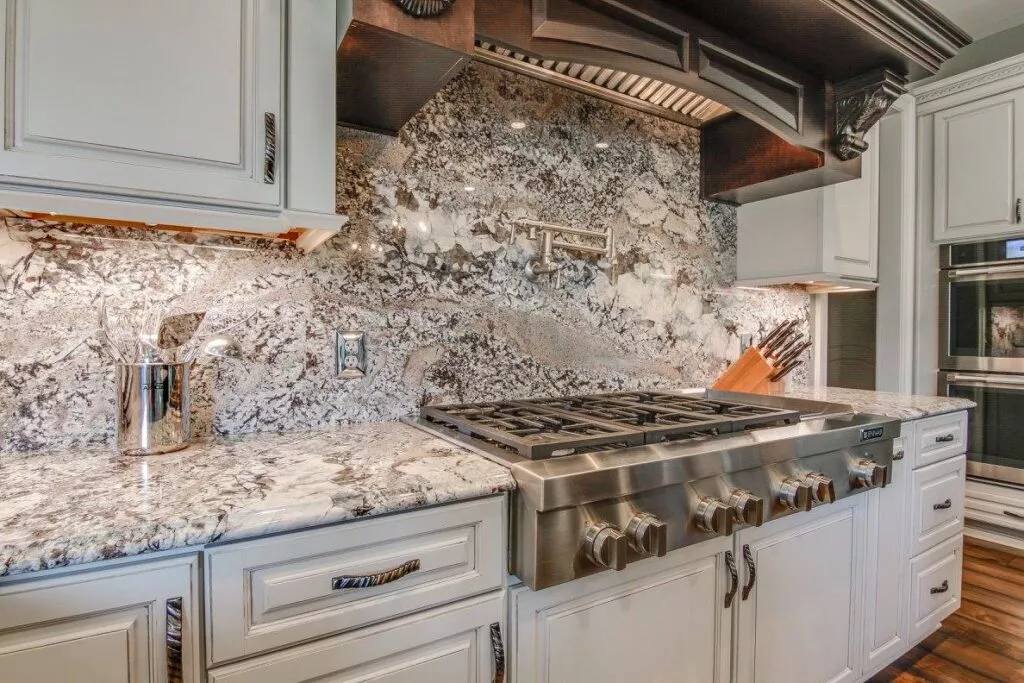
Pick scale first, then texture
Large moves
- Slab stone from counter to ceiling.
- 12×24 or larger tiles in a stacked layout.
Subtle texture
- Hand-formed tile with soft edges.
- Fluted stone or tile as a single accent plane.
Grout choices
- Match tone for a quiet field.
- Tight joints reduce lines and cleaning.
Edge details
- Return slabs at ends for a finished look.
- Integrate a shallow ledge for oils and small jars.
A calm backsplash helps the whole room breathe. Texture beats tiny pattern.
Are waterfall islands still on trend?
Waterfalls are not gone; they are just used with intention. They shine with strong stone movement or to protect ends in high-traffic paths. Many 2025 kitchens soften blocky look with radiused corners, wood ends, or furniture-style legs.
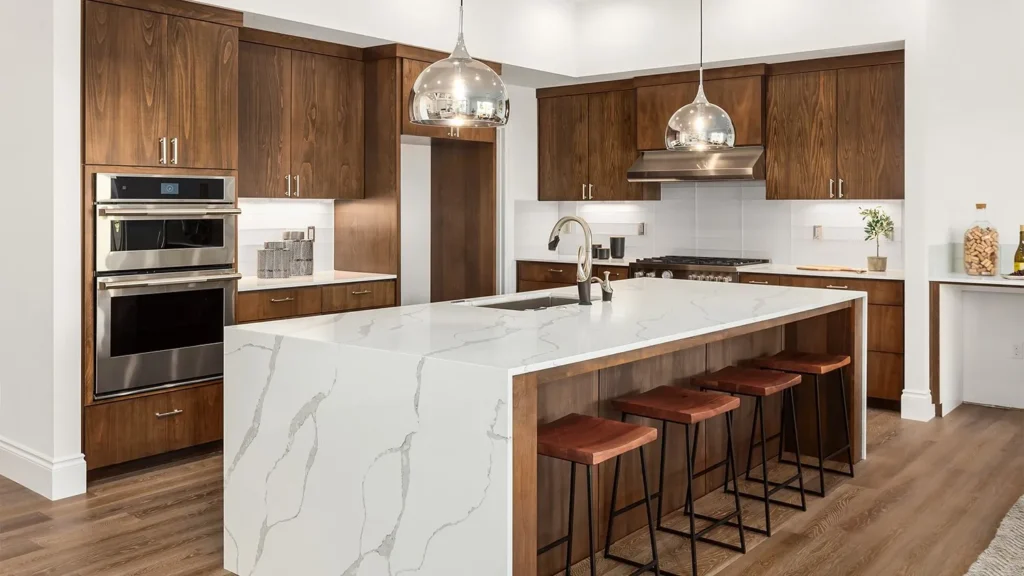
When a waterfall earns its keep
Good cases
- Stone with bold movement you want to showcase.
- End panels that take kicks from stools and bags.
Better alternatives
- Thickened top with flush wood end.
- Rounded corners for safer movement.
- Open shelf end for cookbooks or baskets.
Proportion basics
- Keep overhangs generous for knees and stools.
- Align veins when wrapping stone down the side.
Use waterfalls to solve problems or show stone, not by default.
What kitchen lighting updates make the biggest impact?
Layered light changes everything. Aim for three layers: task, ambient, and accent. For accurate color at the mirror or prep zone, look at color rendering index. For damp areas near water, confirm a suitable IP Code.
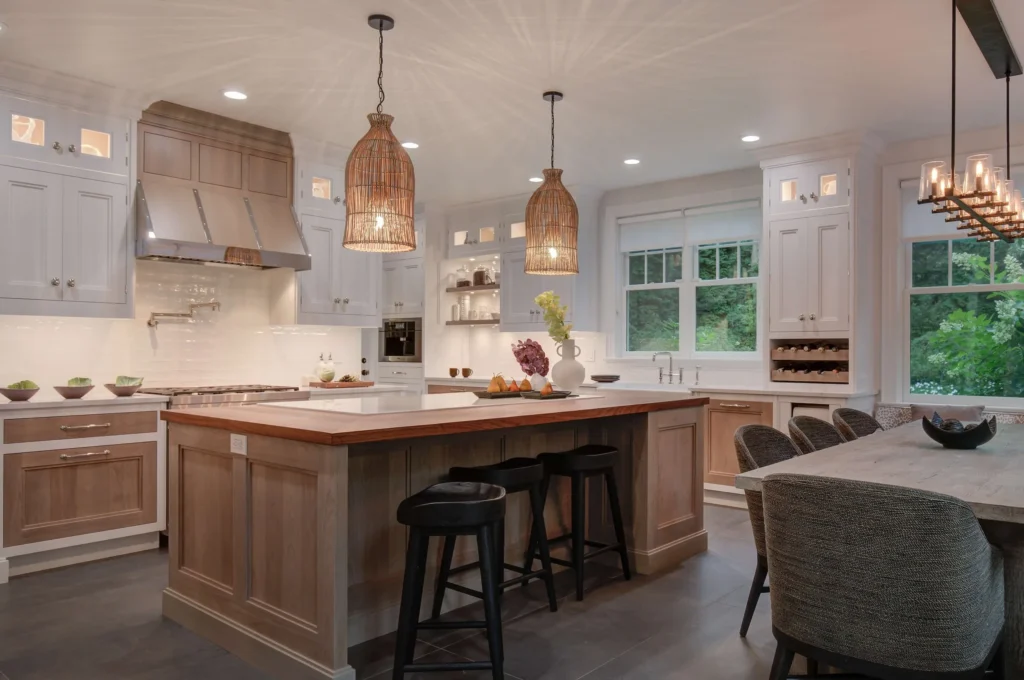
A simple lighting plan
Task
- Under-cabinet lights for counters.
- Side sconces at face height reduce shadows at tall splash zones.
Ambient
- Ceiling cans on one circuit.
- Dimming for day to night.
Accent
- Pendants over islands.
- Tape light for toe-kick or shelf glow.
Fixture checklist
| Zone | Best Fixture | Notes |
| Counter task | LED under-cabinet | Even spread; avoid dots |
| Island | 2–3 pendants | Size to island thirds |
| Sink | Sconce or downlight | Keep glare out of eyes |
| Display | Tape or puck | Hidden runs look cleaner |
Use warm, dimmable light. Mix sources so faces and food look good at any hour.
What flooring options feel current and durable?
Choose surfaces that fight water and wear. Porcelain tile remains a champ for durability and radiant heat. Porcelian tile is dense and easy to clean. Engineered wood balances warmth and stability; see engineered wood for how layers resist movement.
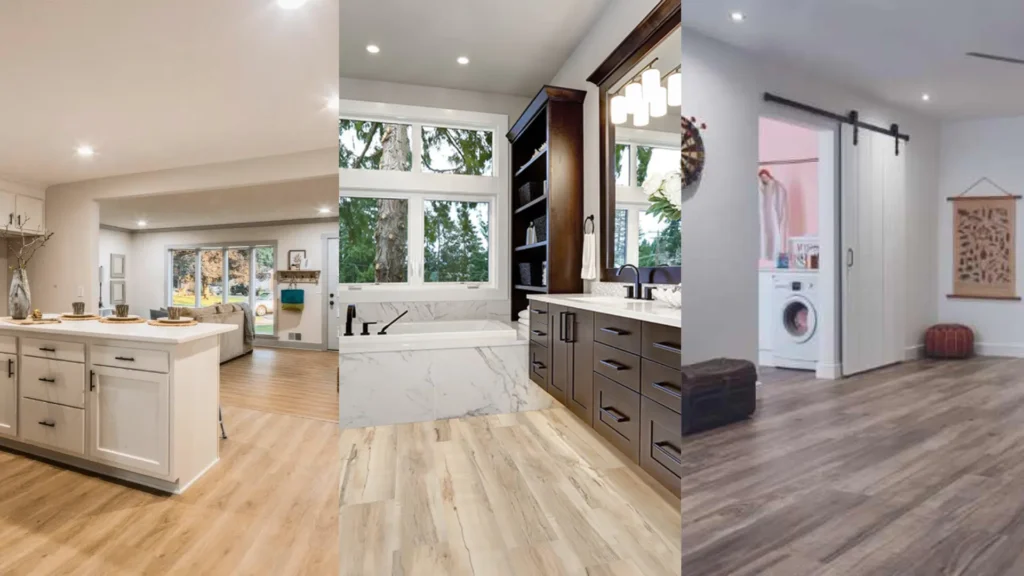
Pick by use, not hype
Tile
- Great for heavy traffic and pets.
- Add rugs at prep zones for comfort.
Engineered wood
- Real wood veneer over stable core.
- Choose matte finishes to hide scuffs.
Luxury vinyl plank (LVP)
- Quiet and forgiving underfoot.
- Best for budgets and quick installs.
Quick comparison
| Flooring | Water Resistance | Comfort | Upkeep | Notes |
| Porcelain tile | Excellent | Low | Low | Best for durability |
| Engineered wood | Good | Medium | Medium | Warm, natural |
| LVP | Excellent | High | Low | Budget-friendly |
Avoid high-gloss dark floors if you hate visible dust and scuffs. Mid-tone, matte, or textured finishes hide life better.
Are smart appliances worth the upgrade in 2025?
Pick features that save time or prevent damage. Think induction cooking for speed and safety. Think leak sensors and smoke/CO alerts. Skip gimmicks you will not use. Reliability beats novelty.
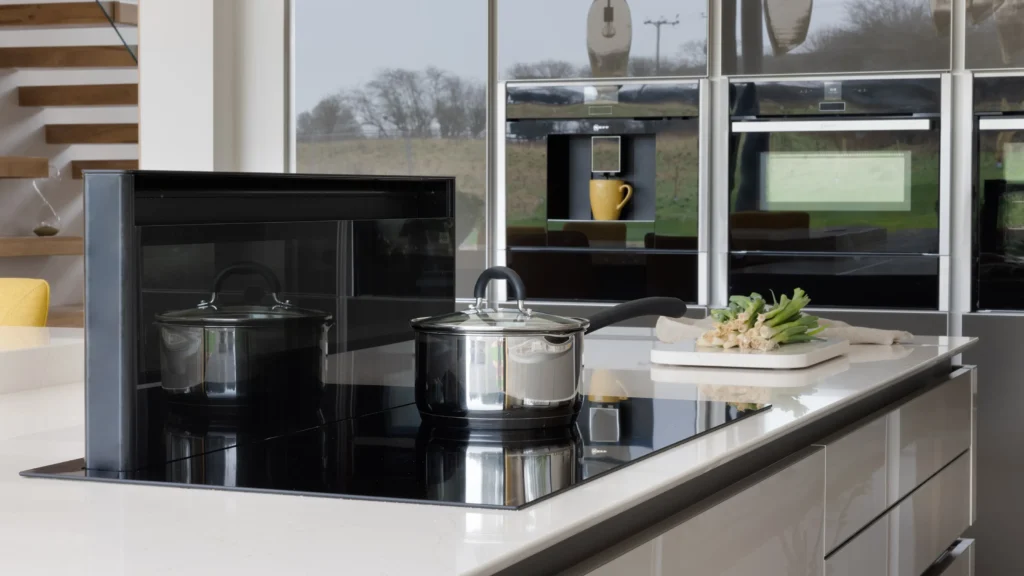
A smart way to choose “smart”
High-value features
- Induction tops: fast heat, easy cleanup, safer surfaces.
- Ovens with probe control and remote alerts.
- Leak and smoke/CO monitors tied to your phone.
Low-value features
- Screens you never touch after week one.
- Loud notification lights in open plans.
Checklist before you buy
- Can you get parts and service locally?
- Is there a non-app way to run the core function?
- Do you mind software updates on a fridge?
Smart can help if it cuts work or adds safety. Start with the upgrades you will touch every day.
Conclusion
Lead with function, add warmth, and choose scale over fuss. Your kitchen will age well because it serves well.
Final CTA
Have a floor plan? Send it. We will suggest a layout, match finishes across rooms, and give a quick budget idea. Ready to begin? Send the floor plan to us.
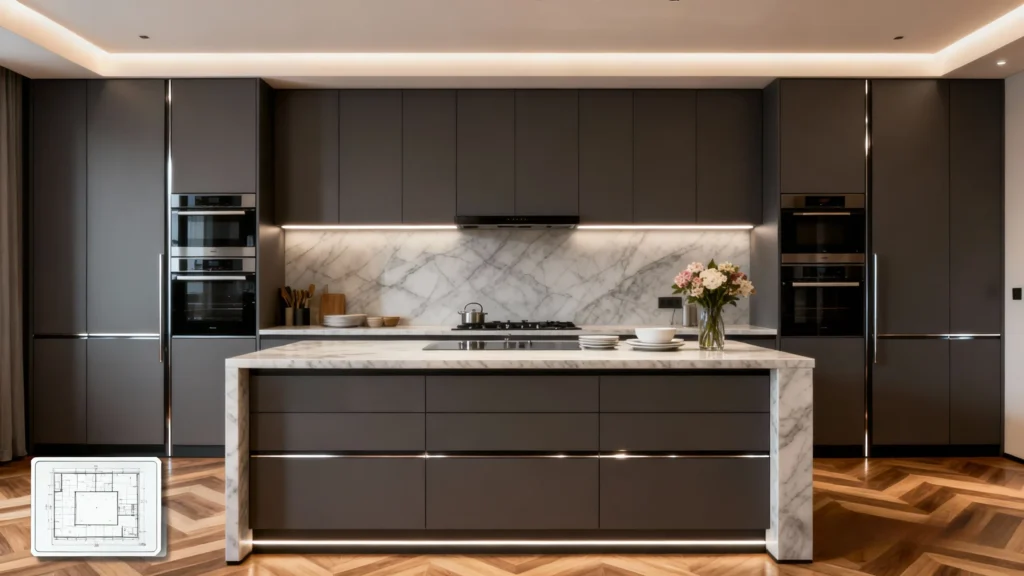
FAQ
Are open kitchen shelves out of style in 2025?
They are used more sparingly now. Designers favor fewer display shelves plus enclosed storage to control dust and clutter.
Are all-white kitchens outdated in 2025?
Pure white-on-white reads flat to many designers. Warm whites with wood and color accents keep the look fresh and more personal.
Are Shaker cabinets going out of style?
Not entirely. They remain common, though many designers shift to slimmer rails or slab for a cleaner read and more originality.
Is farmhouse style out in 2025?
The mass-market, cookie-cutter version is fading. A refined, cottage-inspired take with color, pattern, and real wood still appeals.
Is matte black hardware going out of style?
Designers report a move toward softer brushed metals and satin finishes to ease contrast and add warmth.
What kitchen lighting gives the best task light?
Layered plans work best: under-cabinet for counters, pendants for islands, and sconces where faces need even light. Mix sources and dim.
What flooring holds up best in kitchens for 2025?
Porcelain tile leads for durability; engineered wood and quality LVP balance comfort and care needs in busy homes.
Are smart appliances worth it now?
Pick features that add safety and real convenience, like connected ovens, leak sensors, and induction ranges; skip gimmicks you will not use.
